
Over the years, I’ve seen many giant-scale modelers suffer some sort of a failure that ended with a damaged aircraft. I have experienced a few situations myself.
While flying my Hangar 9 30cc DHC-2 Beaver, I experienced a rough takeoff when a wheel collar loosened, causing the wheel to come off. The landing-gear leg hit the ground, and the model nosed over and suffered a prop strike. With the force of the impact, the end result was a broken tailwheel mount and a broken fiberglass landing-gear fairing. Here’s how I fixed my model.
INSPECTION BASICS
After an accident, it is important to examine your model to ensure that further damage doesn’t exist. With the Beaver’s nose over, the obvious damage was a broken propeller, a broken landing-gear fairing, and a damaged tailwheel mount.
The first order of business is to remove the cowl, the main landing gear, and the tailwheel assembly. Because my tailwheel mount, certain stringers, and balsa sheeting were damaged, I also removed some covering around the area using a sharp hobby knife. When removing the UltraCote covering, be careful to cut through only the covering and not damage the wood underneath. It is helpful to keep all the items you removed (like the stringers and balsa sheeting fragments) in small plastic bags and separate from the aircraft to avoid confusion with component replacement during the repair.
At this time, I also removed the broken landing-gear fairing, which had been secured to the fuselage with a silicone-based adhesive. Using a sharp hobby knife, I peeled the adhesive away from the landing-gear fairing.
This story is from the {{IssueName}} edition of {{MagazineName}}.
Start your 7-day Magzter GOLD free trial to access thousands of curated premium stories, and 9,000+ magazines and newspapers.
Already a subscriber ? Sign In
This story is from the {{IssueName}} edition of {{MagazineName}}.
Start your 7-day Magzter GOLD free trial to access thousands of curated premium stories, and 9,000+ magazines and newspapers.
Already a subscriber? Sign In
Legend Hobby / Seagull Models - Cessna Grand Caravan 208
The Cessna Grand Caravan 208 is a legend in aviation circles. A single engine utility aircraft that punches up with capabilities that rival many twin engine aircraft in its class. Its seemingly simple configuration belies its near extreme utility.
PROPER CG LOCATION FOR AEROBATICS
If you are getting into aerobatics and are starting to perform more advanced maneuvers, it is time to discuss ways you can not only become a better pilot, but how you can also improve the flight characteristics of your airplanes.
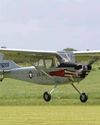
Legend Hobby 13-Foot L-19 Bird Dog/ Cessna O-1
This famous multi-mission single engine observation aircraft served from 1950-1974. From calling out target locations to providing intel/recon information, the Bird Dog was a valued asset in both the Korean War and Vietnam.
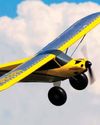
EARN YOUR WINGS
10 Tips for First-Flight Success
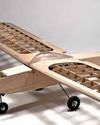
Old School Model Works Fifty Six
The Fifty Six takes its design cues from the original .09- to .15-size Carl Goldberg Falcon 56 of the 1960s. Reworked to incorporate modern, lasercut techniques to make kit building better than ever.
FLYING TWINS Multi-engine warbirds made easy
Let’s face it, there’s just something extra special about twin-engine RC aircraft. Most modelers stop what they’re doing when a twin fires up on the flightline.
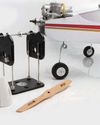
HOW TO BALANCE PROPELLERS
Four easy steps to increase performance and reduce vibration
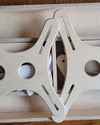
PRODUCT REVIEW: RC PLANE STANDS BENCHTOP MODEL
I’m a sucker for shop stuff. I buy tools I will probably never use just because they are cool, or I might need to use them someday. When Glen from RC Plane Stands reached out about a review, however, I knew as soon as I browsed their website that I would be receiving something I would use a lot, maybe even daily.
SPIRIT OF RHINEBECK AWARD WINNER
A close up of Norman Malinowski’s 1/3-scale Albatros
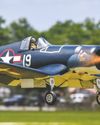
CENTER OF GRAVITY BASICS
The secret to a plane that flies well